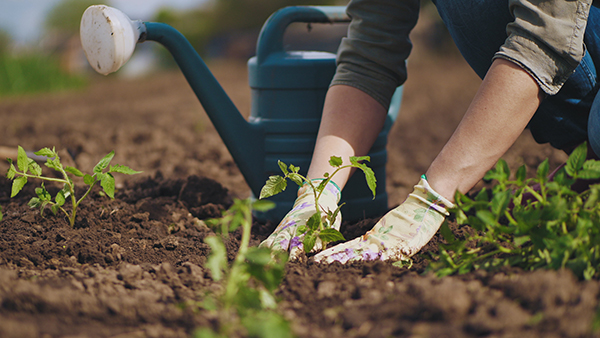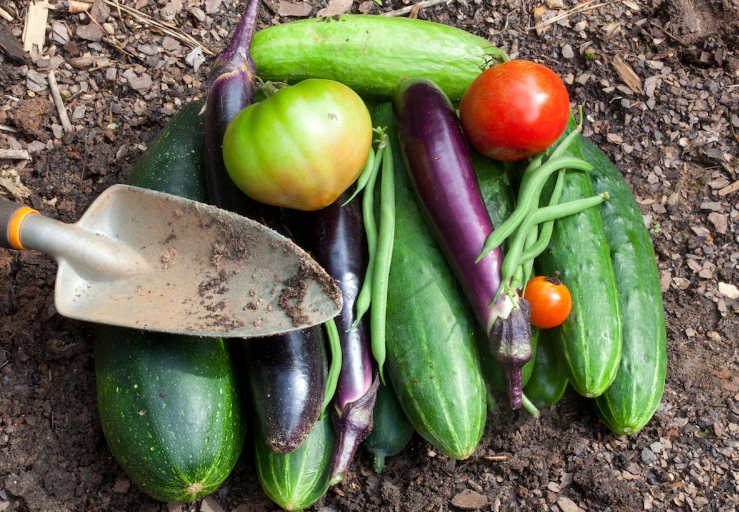
Science-backed resources
Your local extension office is one of the best authoritative resources backed by arboretums or botanical gardens and universities. For instance, with a vast network of 250 county Extension offices, 616 Extension agents, and 343 subject-matter specialists, the expertise provided by AgriLife Extension is available to every resident in every Texas county.
When searching for information online, add the word "extension" to your search. The search engine will prioritize results from university extension services. (Related: Online herb gardening resource launched by University of Illinois.)
Information about your region
Here are some links to useful information and guides so you can plant what your family enjoys cooking and eating:
Find your zone – will identify what plants are suitable for your USDA zone.
Vegetable growing guides – guides for 58 garden vegetables where each profile contains a detailed description and growing instructions, site and soil requirements, varieties and solutions for managing pests and diseases.
Food gardens
Starter vegetable gardens – a book to help new food gardeners establish and then enlarge a productive food garden. Author Barbara Pleasant addresses common problems that first-time gardeners encounter.
Using simple language and illustrated garden layouts, Pleasant shows you how to start, maintain, and eventually expand an organic vegetable garden in even the tiniest backyard.
With handy tips on enriching soil, planting schedules, watering, fighting pests, and more, you’ll quickly discover how easy it is to enjoy your own homegrown vegetables.
All new square foot gardening, 3rd edition – covers everything about a simple way to get maximum food out of minimum space. This 272-page instructional book intends to help beginners and experienced gardeners boost their organic vegetable harvest with “how to's” such as:
- Adding trellises and archways to grow up and maximize your space
- Feeding your veggies the organic way
- Growing vegetables in dense urban areas with little or no yard
- Installing automatic watering systems
- Managing pests in the garden with natural methods
- Protecting your plants with shade and frost covers
- Teaching STEM to kids with Square foot gardening
The week-by-week vegetable gardener’s handbook – helps new gardeners figure out exactly when to plant and when to harvest. Authors Jennifer and Ron Kujawski cover when to do every imaginable garden chore, based on your area’s frost-free date – an organized and stress-free approach to detailed weekly “to-do” lists that break gardening down into simple and manageable tasks.
Vegetables love flowers: Companion planting for beauty and bounty – a super guide that explains the benefits of interplanting flowers and vegetables. Author Liza Mason Ziegler says you’ll learn about:
- Composting heaps and bins
- Garden planning, seed starting, growing and harvesting
- How to attract beneficial creatures to pollinate your garden and prey on its pests
- How to make garden flower bouquets, with "recipes" for various arrangements
- Pesticide-free pest-control measures
The Americal Horticultural Society
The American Horticultural Society (AHS), one of the oldest national gardening associations in the country, providing America’s gardeners with the highest quality gardening and horticultural education possible, recommends the following publications:
AHS: A-Z encyclopedia of garden plants – a comprehensive reference for the American gardener, which includes detailed, cross-referenced descriptions of more than 15,000 plants.
AHS: Encyclopedia or perennials – alphabetically organized for easy access, a lavishly illustrated reference encompasses detailed descriptions and full-color portraits of some 5,000 perennial plants, representing more than 450 genera, in their natural habitats.
AHS: Encyclopedia of plants and flowers – packed with 8,000 plants for every climate – from annuals, biennials, bulbs, cacti, perennials, shrubs, trees and water plants, this fully revised and updated edition is a must-have for all gardeners. It features a brighter, clearer design and improved navigation — cataloging plants by color, season, and size — that makes the book more intuitive for the reader.
AHS: Great plant guide – fully updated and revised, this book covers more than 1,000 plants and discusses various plant species, growth behaviors and locations, ornamental features and optimal plant care. The Guide provides a "shopping list" of plants for every purpose, whether practical, such as a group of plants for a damp, shady site, or for themed plantings, such as a selection of plants to attract birds into your garden.
AHS: New encyclopedia of gardening techniques – an essential and treasured reference book that clearly outlines the key skills and concepts every gardener needs to be successful, no matter where in North America you live.
Whether you want to grow herbs, fruits or vegetables, create flower beds or provide pollinator habitats, this book shows you how to accomplish your goal using earth-friendly techniques.
AHS: Pruning and training – presents all the techniques you need in easy-to-follow, step-by-step explanations whether you are planning a new garden, wondering how to bring back a neglected tree or shrub, or want to develop areas of special interest.
AHS: What plant when – previously published as Plants for Every Season, this compact book is the perfect guide to choosing beautiful plants to give seasonal interest and color to your garden all year round. From springtime bulbs to shrubs and climbers for fall color, to evergreens for winter interest, the book guarantees that you'll have a beautiful and inviting garden throughout the year.
Homegrown harvest: A season-by-season guide to a sustainable kitchen garden – provides lifestyle-changing advice from foremost fruit and herb experts that gardeners need for growing a year-round supply of healthy edible crops for their table. Specific local and regional advice enables gardeners to decide how and what to grow wherever they live in North America.
The book starts with planning what to grow, then how to grow it – whether in an allotment, containers, a raised bed or vegetable patch – as well as information on how to get the best from your soil.
Over the course of 12 seasonal chapters, from early spring to late winter, the book shows how to go from sowing to harvesting with clear instructions that help you stay on top of the joys and challenges of a productive garden.
From apples and asparagus, raspberries to radishes, this book shows how to apply age-old techniques in a timely fashion, to get the most from your plot.
Watch the following video to find out more gardening resources.
This video is from the Daily Videos channel on Brighteon.com.
More related stories:
Prepping 101: How to grow food in an indoor survival garden.
Home defense tips: 7 Ways to protect your garden from looters and intruders.
The revolution is in your backyard: Become self-sufficient and start a home garden.
Sources include:
Please contact us for more information.






















